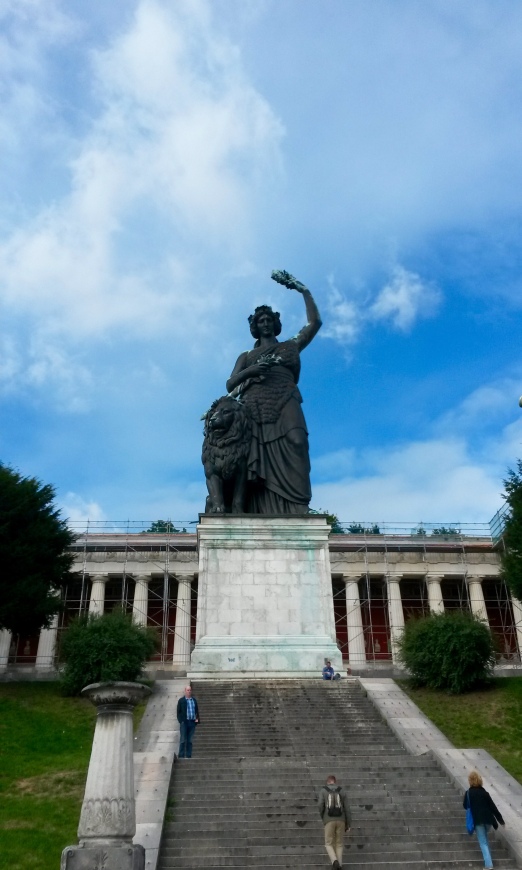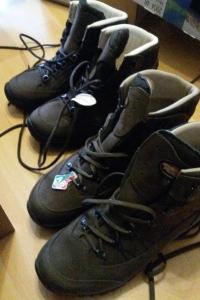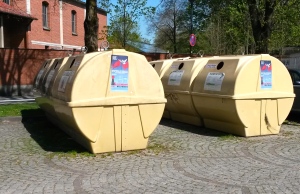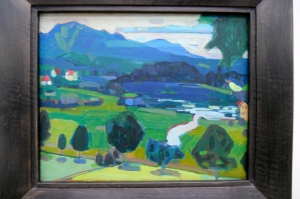Yes, really, this is one castle up on the hill in the small Bavarian town of Burghausen, which lies on the Salzach River on the German-Austrian border.

A picture of the entire castle obviously required the panorama setting on my camera. This is a view of the castle with the town below it taken from the Austrian side of the Salzach.
My brother and I drove on a cold winter’s day about a year ago from Munich 1.5 hours east to Burghausen. We parked up at the castle. The day was gray and windy – especially up on the hill. After a tour of the castle, we walked down through the town, across the bridge, and the sun came out for a bit.

Looking down on the Old Town of Burghausen from the castle
Like all real castles, Burg zu Burghausen has a long history, which you can see in the pieced-together look of the castle itself. The first mention of the castle was in the year 1025. The main part of the castle was built in the 14th-15th centuries, in the time period that the Bavarian kings took up residence there, but the oldest fragments of the castle still in existence go back to 1090. Throughout the centuries, the castle was expanded… it had a military defense function in the 16th-18th centuries. Towards the end of the 19th century, the citizens of Burghausen were able to prevent demolition of the castle. The first renovations took place around the turn of the 20th century, and since the 1960s, historical renovations have continually taken place to return some the original character of the castle. Burg zu Burghausen belongs to the Bavarian state and parts of the castle serve as museums and event rooms, while other parts are rented as homes! That’s where I’d want to live if I lived in Burghausen!
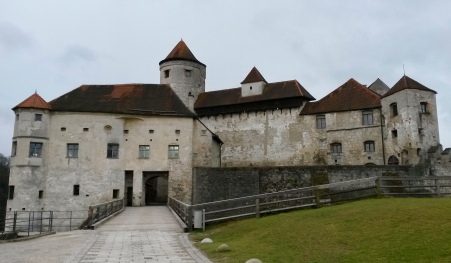
Passing through a courtyard to head to the museum area.
There is one main castle and six courtyards strung along the ridge. We walked through the courtyards and toured one part of the main castle, which housed rooms that were set up with furniture along with art galleries.
I’ll let the pictures speak for themselves…
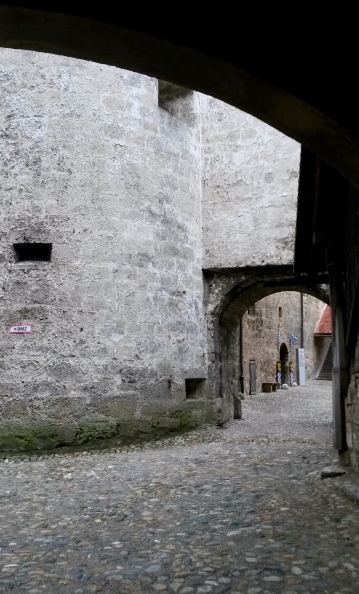
Inside the main courtyard.
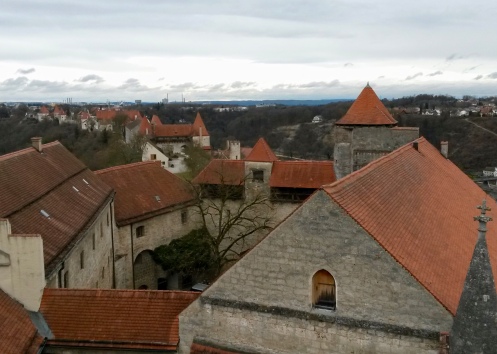
Photo from the roof of the main castle.

One more view of the main castle from the river bank.
This was a great half-day-trip destination from Munich. On a warmer, sunny day, we would have surely liked to stay longer up at the castle complex and enjoy the views from the courtyards. As it was, though, we had the castle to ourselves!

